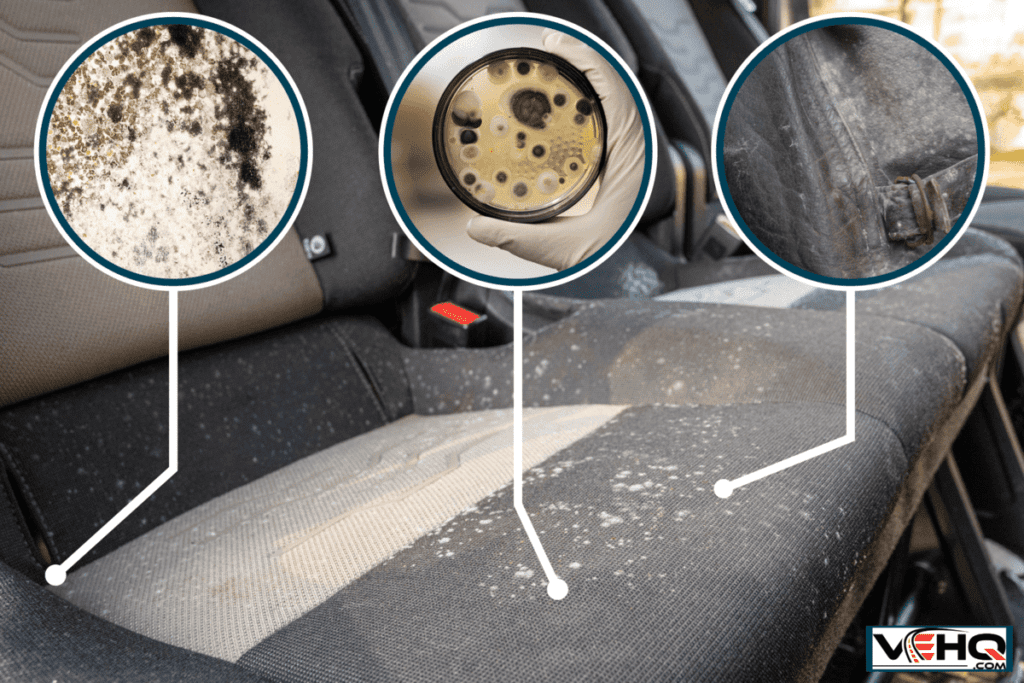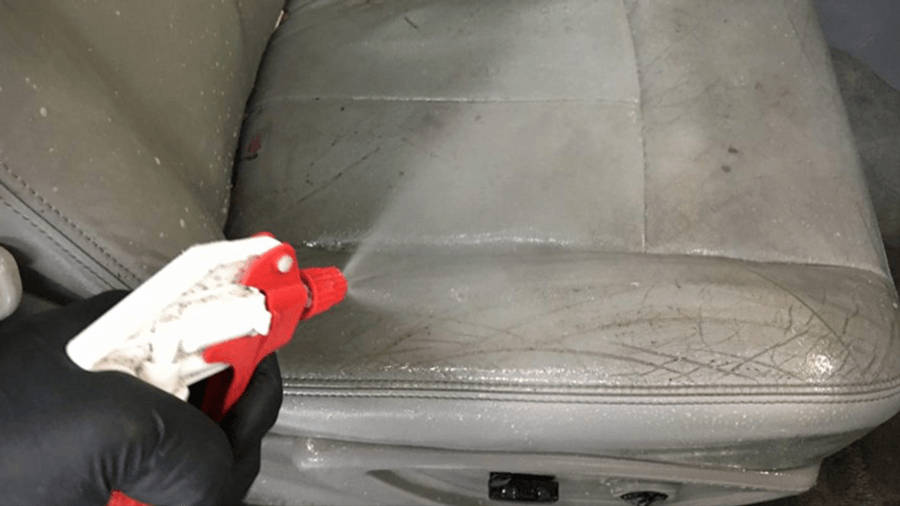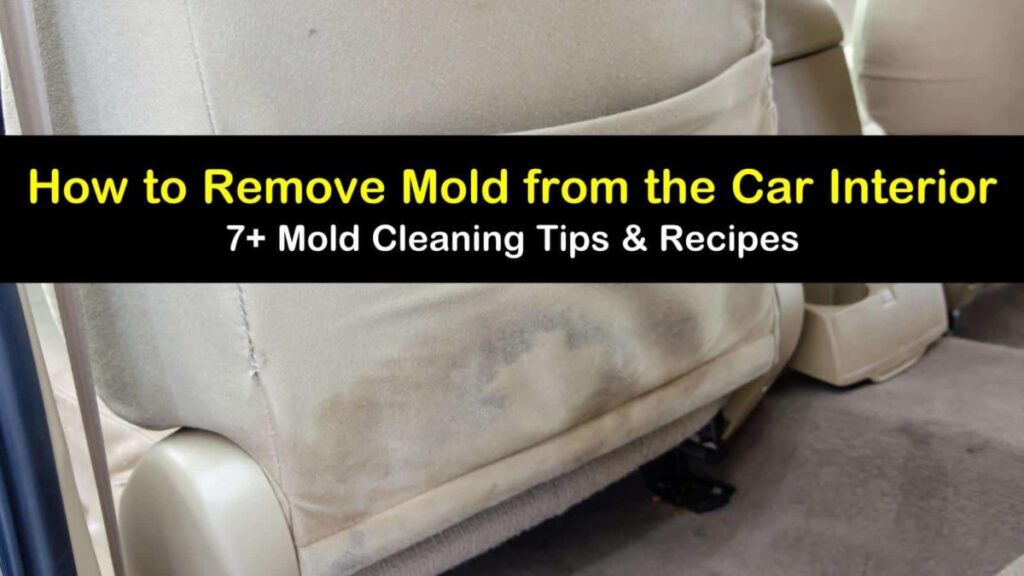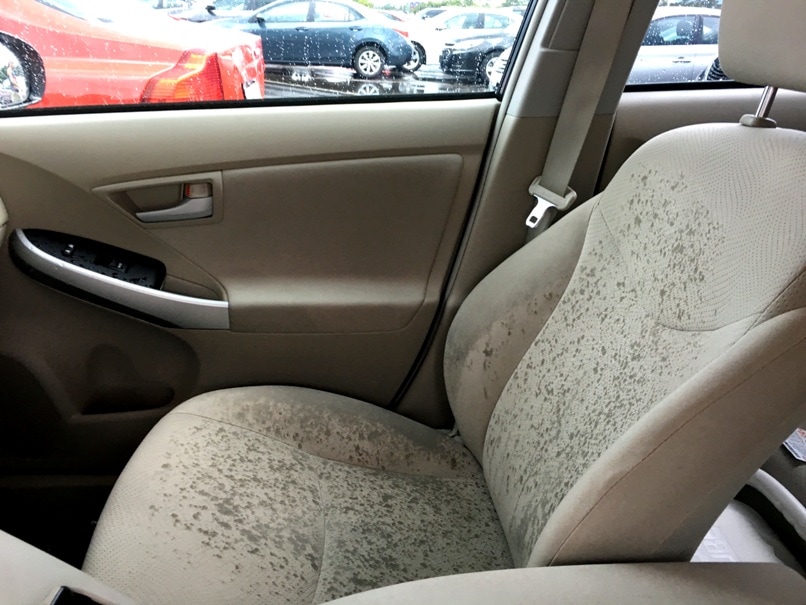In this article, we will explore whether there are any natural methods to remove mold from a car interior. We will discuss the potential causes of mold growth, the dangers associated with it, and then dive into some possible natural solutions. By the end of this article, you will have a better understanding of how to effectively tackle mold in your car without relying on harsh chemicals.

The Dangers of Mold in Car Interior
Mold growth in car interiors can be a serious issue that not only affects the appearance of the vehicle but also poses health risks to anyone who spends time inside. Mold thrives in moist environments, and the confined space of a car interior creates the perfect conditions for mold to grow and spread rapidly. In this article, we will explore the dangers of mold in car interiors, the health risks associated with mold exposure, how to identify mold growth, the causes of mold growth in car interiors, and most importantly, natural methods to remove mold and prevent its recurrence.
Why is mold dangerous in car interior?
Mold growth in car interiors can have adverse effects on your health and well-being. When mold spores are released into the air, they can be inhaled, leading to various respiratory issues. Common symptoms associated with mold exposure in car interiors include coughing, sneezing, wheezing, throat irritation, nasal congestion, and even allergic reactions. Prolonged exposure to mold can also result in more severe health conditions such as asthma, bronchitis, and other respiratory infections. Therefore, it is crucial to address mold growth in car interiors promptly and effectively.
Health risks of mold exposure in car interior
Exposure to mold can have severe consequences for your health. The presence of mold in car interiors increases the risk of respiratory issues, especially for individuals with pre-existing conditions such as asthma or allergies. Mold releases allergens and irritants into the air, which can trigger asthma attacks or worsen existing symptoms. Additionally, mold can produce toxic substances known as mycotoxins, which, when inhaled or touched, can cause allergic reactions, skin irritation, or even more severe health problems. Protecting yourself and your passengers from mold exposure should be a top priority to ensure a safe and healthy driving environment.
Identifying Mold in Car Interior
Before attempting any mold removal methods, it is crucial to identify and confirm the presence of mold in your car interior. There are several signs that indicate mold growth in car interiors, including a musty or earthy odor, visible discoloration or staining on upholstery, carpeting, or other interior surfaces, and the presence of fuzzy or slimy patches. Mold often appears as black, green, or brown spots that can spread quickly if not addressed. To visually identify mold in your car interior, carefully inspect all surfaces, including seat cushions, floor mats, air vents, and other areas prone to moisture accumulation.

Causes of Mold Growth in Car Interior
Understanding the causes of mold growth in car interiors can help you implement preventive measures to avoid recurrence. The following factors contribute to mold growth in car interiors:
High humidity levels
Cars that are parked in humid climates or stored in areas with high humidity levels are more susceptible to mold growth. The moisture in the air condenses on surfaces inside the car, providing an ideal environment for mold spores to thrive.
Water leaks or spills
Leaking windows, sunroofs, or doors can introduce water into the car interior, creating damp conditions that promote mold growth. Additionally, spills that are not promptly cleaned up can lead to moisture buildup and mold formation.
Poor ventilation
Insufficient airflow and inadequate ventilation in the car interior can trap moisture and increase humidity levels, creating an inviting habitat for mold. Lack of proper ventilation worsens the situation, especially if the car is frequently exposed to moisture or damp conditions.
Preventing Mold Growth in Car Interior
Taking proactive measures to prevent mold growth in your car interior is the best approach to maintaining a healthy and mold-free environment. The following preventive steps can help keep your car interior dry and mold-free:
Regular cleaning and maintenance
Regularly clean your car interior, including vacuuming the upholstery and carpeting, wiping down surfaces with a mild detergent, and removing any visible mold or mildew promptly. Regular maintenance ensures that any potential sources of moisture or mold are addressed promptly.
Proper ventilation and air circulation
Ensure proper ventilation in your car by opening windows or using the car’s air conditioning system to improve airflow. Use window shades to protect the interior from direct sunlight, which can lead to excessive heat and humidity. Additionally, leaving the windows slightly cracked when parking can help circulate fresh air and reduce moisture buildup.
Avoiding moisture buildup
Prevent moisture buildup by removing wet or damp items like wet clothes, towels, or umbrellas from the car interior. Place moisture-absorbing materials such as silica gel packets or activated charcoal bags in your car to help reduce humidity levels.

Traditional Methods to Remove Mold from Car Interior
While natural methods can be effective in removing mold, there are traditional methods using commercial mold removers or professional mold removal services that can be employed for severe cases. When dealing with mold removal using traditional methods, it is essential to remember the following:
Using commercial mold removers
Commercial mold removers are readily available and contain powerful chemicals designed to eliminate mold. Follow the instructions provided carefully and wear appropriate protective gear, such as gloves and a mask, to avoid exposure to harmful chemicals.
Professional mold removal services
For severe mold infestations or persistent mold growth despite preventive measures, it may be necessary to enlist the help of professional mold removal services. Professionals have the expertise and equipment to effectively remove mold and ensure thorough remediation.
Importance of proper protective gear
When using commercial mold removers or engaging in mold removal activities, it is crucial to protect yourself with proper gear. Wear gloves, a mask, and safety goggles to prevent direct contact with mold spores or exposure to harsh chemicals.
Natural Methods to Remove Mold from Car Interior
If you prefer to use natural methods to remove mold from your car interior, there are several effective and safe alternatives available:
Vinegar solution
Vinegar is a natural disinfectant and can effectively kill mold. Create a solution of equal parts vinegar and water and spray it onto the moldy surfaces. Allow the solution to sit for a few hours before wiping it away with a clean cloth. Repeat this process as needed until the mold is completely eliminated.
Baking soda paste
Baking soda is another natural cleaning agent that can help remove mold. Mix baking soda with water to create a thick paste and apply it directly onto the moldy areas. Use a brush or sponge to scrub the paste into the mold and let it sit for several hours. Rinse the area thoroughly and wipe away any residue.
Tea tree oil spray
Tea tree oil is a natural antifungal agent that is effective in killing mold. Mix tea tree oil with water in a spray bottle and liberally spray the solution onto mold-infested surfaces. Allow the mixture to sit for a while before wiping it away with a clean cloth. Tea tree oil also helps eliminate the musty odor associated with mold.
Hydrogen peroxide solution
Hydrogen peroxide is a natural alternative to bleach and can effectively kill mold and remove stains. Use a 3% hydrogen peroxide solution and spray it onto moldy surfaces. Allow it to sit for 10-15 minutes before scrubbing the area with a brush or sponge. Rinse the area thoroughly and dry it completely.

Step-by-Step Guide to Removing Mold Naturally
To effectively remove mold from your car interior using natural methods, follow these step-by-step instructions:
1. Preparing the necessary tools and materials
Gather the required tools, including a spray bottle, clean cloths, a brush or sponge, and the chosen natural mold removal agent (vinegar, baking soda, tea tree oil, or hydrogen peroxide).
2. Cleaning the affected areas
Thoroughly clean the moldy areas by vacuuming any loose debris and wiping down surfaces with a mild detergent. Remove any visible mold or mildew using a clean cloth or brush.
3. Applying the natural mold removal method
Prepare the chosen natural mold removal agent according to the instructions provided. Spray the solution onto the moldy surfaces, ensuring complete coverage. Let the solution sit for a designated period to allow it to penetrate and kill the mold.
4. Drying and ventilating the car interior
After the designated period, wipe away the solution with a clean cloth and rinse the area if necessary. Ensure proper airflow and ventilation by allowing the car interior to dry completely. Use a fan or open windows to expedite the drying process.
Additional Tips for Mold Prevention
While removing mold from your car interior is essential, taking preventive measures can help minimize future growth. Consider the following additional tips to keep your car interior mold-free:
Regularly clean and disinfect car interior
Create a regular cleaning routine for your car interior, focusing on removing debris, mold, and mildew. Vacuum the upholstery, wipe down surfaces, and use disinfectant sprays or wipes to maintain cleanliness.
Keep car interior dry and well-ventilated
Ensure that your car interior remains dry by promptly addressing any water leaks, spills, or condensation. Implement proper ventilation, utilize air conditioning or fans, and avoid leaving wet items inside the car.
Monitor and address any water leaks or spills promptly
Water leaks or spills should be promptly addressed to prevent moisture buildup and mold growth. Inspect your car regularly for any signs of leaks or water damage, and take appropriate measures to resolve the issue.

When to Seek Professional Help
While natural methods can be effective in removing mold from car interiors, there are situations where professional help may be necessary:
Severe mold infestation
If the mold growth in your car interior is widespread and extensive, it is advisable to seek professional mold removal services. Professionals have the expertise and equipment to handle severe mold infestations effectively.
Inability to effectively remove mold
If your attempts at removing mold using natural methods are unsuccessful or if the mold keeps coming back despite preventive measures, it may be time to consult professionals for a thorough assessment and treatment.
Persistent mold growth despite prevention measures
If you consistently experience mold growth in your car interior, despite taking preventive measures, it may indicate an underlying issue that requires professional attention. Experts can identify the root cause of the mold growth and implement effective solutions.
Conclusion
Taking immediate action against mold in the car interior is vital for safety and health. Mold growth not only affects the appearance of your vehicle but also poses health risks to you and your passengers. While traditional methods using commercial mold removers or professional services can be effective, natural methods provide safe and environmentally-friendly alternatives. By following the step-by-step guide and implementing preventive measures, you can successfully remove mold from your car interior and maintain a clean and mold-free environment. Remember to regularly clean and disinfect, keep your car interior dry and well-ventilated, and promptly address any water leaks or spills to prevent mold growth.